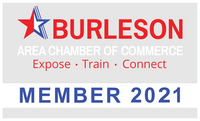Myths and Misconceptions
Ever since the first Cochlear implant surgery in 1972, a lot of myths and misconceptions have bubbled up in the public.
Cochlear hearing solutions have come a long way since then, and more and more people are turning to them when their hearing aids are no longer enough.
Still, there are some people who are held back by fear or by misinformation. We’re here to help clear up these popular misconceptions.
Myth: Cochlear Implants Are Only Good for People Who Are Deaf.
Myth: All I Need are Hearing Aids.
Myth: There’s a Complicated Procedure Involved, Right?
Myth: I’m Too Old to Get Cochlear Implants.
Myth: I’ll Hear Immediately After Surgery.
You’re never too old to hear.
Schedule an evaluation today
References
- Clinical Evaluation of the Cochlear Nucleus CI532 Cochlear Implants in Adults Investigator Meeting. 2019 Apr.
- Potts LG, Skinner MW, Litovsky RA, Strube MJ, Kuk F. Recognition and localization of speech by adult cochlear implant recipients wearing a digital hearing aid in the nonimplanted ear (bimodal hearing). Journal of the American Academy of Audiology. 2009 Jun 1;20(6):353-73.
- Balkany T, Hodges A, Menapace C, et al. Nucleus Freedom North American clinical trial. Otolaryngol Head Neck Surg 2007; 136(5):757-762.
- Semenov, YR, Yeh, ST, Seshamani, M, Wang, N-Y, Tobey, EA, Eisenberg, LS, Quittner, AL, Frick, KD, Niparko, JK, CDaCI Investigative Team. Age-Dependent Cost-Utility of Pediatric Cochlear Implantation. Ear Hear. 2013;34(4):402-412.
- Niparko JK(1), Tobey EA, Thal DJ, Eisenberg LS, Wang NY, Quittner AL, Fink NE, CDaCI Investigative Team. Spoken language development in children following cochlear implantation. JAMA. 2010 Apr 21; 303(15):1498-506.
- Effects of Hearing Loss on Development. American Speech-Language-Hearing Association (ASHA) [Internet]. 2013 [Cited 2013 July]. Available from: https://www.asha.org/public/early-identification-of-speech-language-and-hearing-disorders/
- Sharma A, Gilley P, Martin K, Roland P, Bauer P, Dorman M. (2007). Simultaneous versus sequential bilateral implantation in young children: Effects on central auditory system development and plasticity. Audiological Medicine, 5(4), 218-223.
- https://pubs.asha.org/doi/10.1044/0161-1461%282004/031%29


